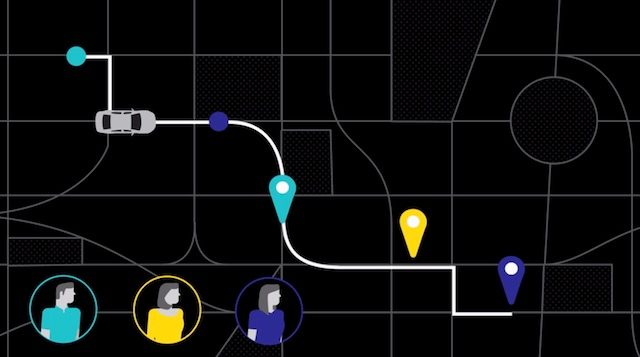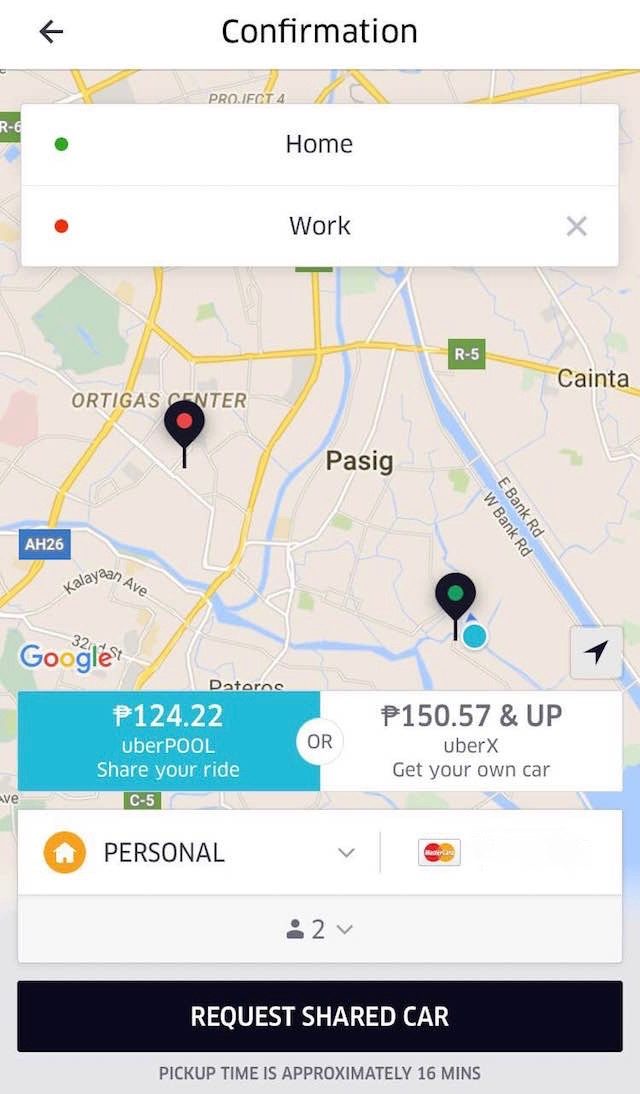SUMMARY
This is AI generated summarization, which may have errors. For context, always refer to the full article.

MANILA, Philippines – Two weeks since its soft launch in Manila, Uber’s newest ride-sharing service has been enticing riders with the promise of cheaper fares – but it also has to contend with the challenges of an efficient and reliable carpooling service in a city with the “worst traffic in the world.”
On June 15, the transportation network company launched uberPOOL, wherein passengers heading the same direction can share a vehicle in exchange for fares that are about 25% cheaper than the Uber X service.
Uber touts its new service as its contribution to the Philippine capital region’s horrendous traffic jams, as more passengers sharing vehicles means cutting the number of cars on the road, according to Uber Philippines general manager Laurence Cua.
Two weeks since it began rolling out to Manila’s riders, Cua said the response so far has been generally positive, even generating interesting stories from passengers who unexpectedly enjoyed the experience of meeting new people through carpooling.
“They find the experience to be somewhat fun…People have been sharing stories where they are matched with another passenger who is fun to talk to. There’s even one story where a passenger rode with a former high school classmate, and they got to reconnect,” Cua said.
Any apprehensions about Filipinos not taking to the concept of sharing rides with strangers was eased out by the response to the new service, he added.
“What’s happened in the last two weeks is we’ve seen people are very comfortable with that, and the great thing there is the adoption has actually exceeded our expectations. We expect this to keep growing. We do think a lot of people are seeing the value of being able to share a car and save money,” he said.
“I think, more importantly, people are getting behind the idea of helping save Metro Manila from more traffic. So it’s a nice social benefit. I think that people feel that they’re also helping in their own little way, they’re trying to get more cars off the road,” he added.

Longer travel time
But it’s not all smooth sailing for Uber’s riders and drivers. While passengers get cheaper fares, the tradeoff is longer traveling time, as they wait for the driver to pick up new carpooling passengers or take longer detours to drop off co-passengers. (READ: UberPOOL in PH: How Uber’s carpool feature works)
In theory, the formula strives to be efficient: Rider A books a ride, Rider B is picked up along the way, and along the route Rider C joins the carpool, while the first two passengers get dropped off at their destinations. The idea is to create a continuous stream of passengers being picked up and dropped off – so that more people get to move around the metro using only one vehicle.
The problem, however, is that while the system matches riders coming from the same geographical location and headed the same way, the travel time builds up significantly because of Manila’s paralyzing traffic jams.
For instance, an uberPOOL ride from Pasay City to Pasig City during the evening rush hour took over 2 hours, with a detour to Bonifacio Global City to drop off a co-passenger. The ride cost P50 less than usual, but added significant minutes in travel time due to the heavy traffic buildup in the area.
Several riders have also expressed the same sentiment, posting messages on Uber’s Facebook page about their riding experience. Several commented that the service would be more suitable for those who aren’t in a hurry or those who don’t mind adding half an hour or more to their trips.
Others were lucky: they requested an uberPOOL ride, but didn’t get matched with other passengers. They managed to book their own private vehicle, while still being charged the cheaper fare.
Some Uber drivers also took to social media to complain about the system. One Vincent Bravo said on Facebook that Uber drivers are earning less on uberPOOL because of the hours they spend on the road stuck in traffic or making additional detours.
Cua said that the uberPOOL model aims to have drivers earning the same amount they would have earned driving an UberX car, or even more.
“That’s the model we’re going after. That’s the part where we are tweaking the system,” he said.
Improving the system
While Cua acknowledged that the company has received such complaints, he added that these were a “small minority.”
“We’re very sensitive to feedback, we are continuously reviewing the data that we’re getting and tweaking the system in small and big ways to make sure it works even better moving forward,” he said.
He added that part of their solution is to provide more information and educate the drivers on how the system works.
Amid some social media sentiments that users would skip uberPOOL because of the longer travel time, Cua said that the soft launch stage allows the company to gather more data and comments to improve the system.
“In order for uberPOOL to really work, we need a lot of users…As more people use it, it’s easier from a technical standpoint and for Uber as a platform in technology to match these people,” he said.
Adapting the carpooling system to Metro Manila’s particular traffic situation has a “level of complexity that is very hard to describe,” Cua admitted, but added that traffic is among the many variables they are considering in tweaking the system and improve user experience.
“Our traffic situation is slightly more unpredictable, and that does create sometimes a less than optimal experience, which is what we’re focused on, making it better,” he said.
“Our traffic is the worst in the world, and how do you adjust around that is something that requires a bit more local attention. When there are changes in the road blocking system or when new routes are rerouted, we should be aware of these things and react accordingly,” he added.
The challenge for Uber is to get riders to keep trying out the carpooling service and help make the system matching process better – but at the same time, to get those tweaks rolling out as soon as possible to ensure that riders won’t be too frustrated that they’ll skip out on choosing to carpool altogether.
“Yes, you are getting a discount in exchange for getting a car off the road and at the same time a short detour, but we want to make sure that it’s not too inconvenient, otherwise we know you will not use it again,” Cua said. – Rappler.com
Add a comment
How does this make you feel?





There are no comments yet. Add your comment to start the conversation.